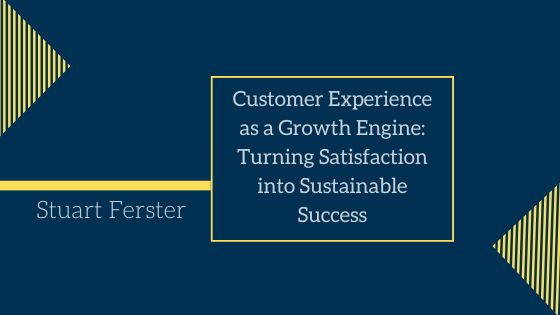In today’s competitive marketplace, products and prices are no longer the sole differentiators between businesses. The real game-changer is customer experience. How a company makes its customers feel at every stage of their journey has a direct impact on loyalty, referrals, and revenue. When done right, customer experience becomes more than just a service priority—it becomes a powerful growth engine.
Why Customer Experience Matters More Than Ever
Customer expectations are higher than ever before. People want convenience, personalization, and quick solutions, but they also want to feel valued and understood. A positive experience creates trust, while a negative one can lead to lost sales and damaged reputation. In fact, customers are often willing to pay more for a better experience, and they are more likely to remain loyal to brands that consistently deliver it.
By focusing on customer experience, businesses can drive repeat sales, increase lifetime value, and turn satisfied customers into enthusiastic advocates. This organic promotion can be far more effective than traditional advertising.
The Link Between Satisfaction and Growth
Satisfied customers are more likely to return and spend more over time. They also provide valuable feedback that can help refine products and services. Moreover, satisfied customers often share their experiences with friends, family, and social networks, leading to new business through word-of-mouth referrals.
This cycle creates a sustainable growth loop: excellent experiences lead to satisfaction, which drives loyalty and referrals, which in turn fuels revenue growth. Unlike short-term sales spikes from promotions or discounts, customer experience-driven growth compounds over time.
Building a Customer-Centric Culture
Turning customer experience into a growth engine requires more than just frontline service improvements—it demands a company-wide commitment. Every department, from marketing to product development to operations, should consider how their actions impact the customer journey.
Leaders must set the tone by prioritizing customer needs and empowering employees to solve problems creatively. Investing in training ensures that teams understand both the importance of customer experience and the skills needed to deliver it consistently.
Using Data to Personalize and Improve
Modern businesses have access to more customer data than ever before. By analyzing purchase history, browsing behavior, and feedback, companies can anticipate needs and tailor interactions. Personalization can range from recommending products based on previous purchases to sending follow-up emails that address specific concerns.
Continuous improvement is also vital. Regularly reviewing customer feedback, tracking satisfaction metrics, and making adjustments ensures the experience remains relevant and competitive.
Turning Satisfaction into Long-Term Success
Customer experience is not a one-time initiative—it is an ongoing strategy that requires commitment and adaptability. Companies that view it as a core growth driver, rather than an optional extra, will see stronger retention rates, increased referrals, and higher profitability.
In a world where products can be replicated and prices matched, the way customers feel when they interact with a brand becomes the ultimate differentiator. By making customer satisfaction the heart of business strategy, companies can transform positive interactions into long-lasting, sustainable success.

